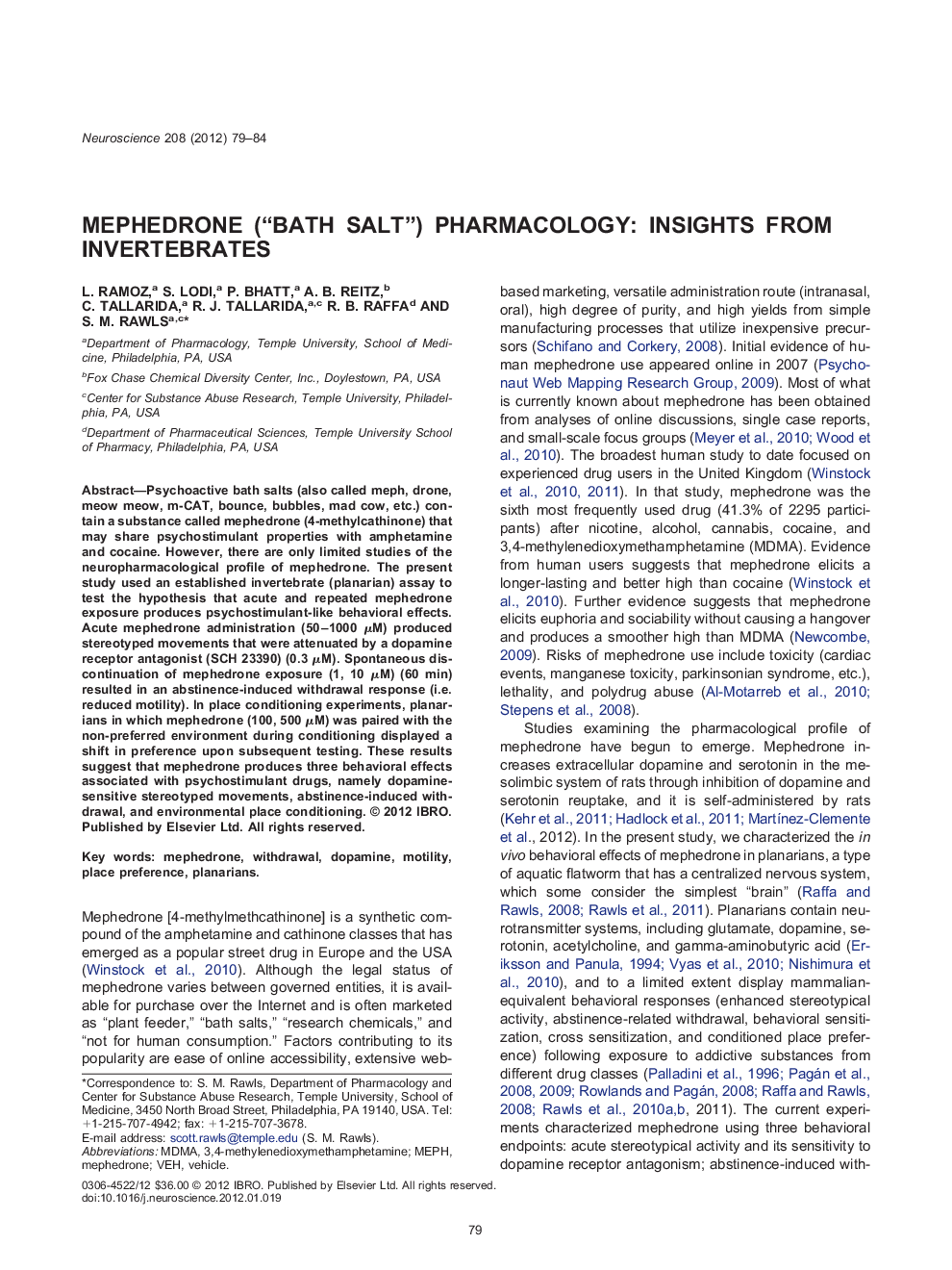| Article ID | Journal | Published Year | Pages | File Type |
|---|---|---|---|---|
| 4338477 | Neuroscience | 2012 | 6 Pages |
Psychoactive bath salts (also called meph, drone, meow meow, m-CAT, bounce, bubbles, mad cow, etc.) contain a substance called mephedrone (4-methylcathinone) that may share psychostimulant properties with amphetamine and cocaine. However, there are only limited studies of the neuropharmacological profile of mephedrone. The present study used an established invertebrate (planarian) assay to test the hypothesis that acute and repeated mephedrone exposure produces psychostimulant-like behavioral effects. Acute mephedrone administration (50–1000 μM) produced stereotyped movements that were attenuated by a dopamine receptor antagonist (SCH 23390) (0.3 μM). Spontaneous discontinuation of mephedrone exposure (1, 10 μM) (60 min) resulted in an abstinence-induced withdrawal response (i.e. reduced motility). In place conditioning experiments, planarians in which mephedrone (100, 500 μM) was paired with the non-preferred environment during conditioning displayed a shift in preference upon subsequent testing. These results suggest that mephedrone produces three behavioral effects associated with psychostimulant drugs, namely dopamine-sensitive stereotyped movements, abstinence-induced withdrawal, and environmental place conditioning.
▶Mephedrone elicits a concentration-dependent increase in stereotypical activity in planarians. ▶Mephedrone-induced planarian stereotypical activity is dopamine sensitive. ▶Mephedrone elicits abstinence-induced withdrawal response in planarians. ▶Mephedrone elicits a conditioned place preference in planarians. ▶Mephedrone causes a triad of psychostimulant-like effects in an invertebrate assay.
